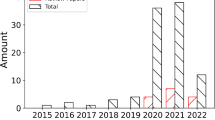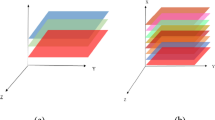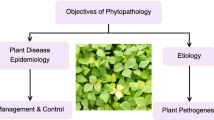Abstract
Honeysuckle (Lonicerae japonicae Flos, LJF) tea is a favorite cool tea in China and Southeast Asia. However, some unscrupulous traders usually use Lonicera Flos (LF) as LJF to sell for earning high profit. In order to identify true and false honeysuckle tea leaves rapidly and precisely, hyperspectral imaging technology was applied to develop a nondestructive identification model for LJF and LF. Firstly, the original spectral data were analyzed by three pretreatment methods including Savitzky–Golay (SG) convolution smoothing, multiple scatter correct and standard normal variate transformation (SNV). Then, a full-band analysis model was established by using the partial least squares-discriminant analysis method. And after the selection of characteristic wavelengths by regression coefficients algorithm, the identification analysis models based on the back-propagation neural network and extreme learning machine (ELM) discriminant were established. The results showed that the BP neural network and ELM discriminant analysis model based on SNV denoising at 9 characteristic wavelengths could achieve the best identification results. The recognition rates of both modeling sets and forecasting sets could reach 100%. Therefore, the application of hyperspectral imaging technology can identify LJF and LF effectively and nondestructively, and has potential in the identification of true and false honeysuckle tea leaves.




Similar content being viewed by others
Abbreviations
- LJF:
-
Lonicerae japonicae Flos
- LF:
-
Lonicera Flos
- HPLC:
-
High performance liquid chromatography
- SG:
-
Savitzky–Golay convolution smoothing
- MSC:
-
Multiple scatter correct
- SNV:
-
Standard normal variate transformation
- PLS-DA:
-
Partial least squares-discriminant analysis
- RC:
-
Regression coefficients
- BPNN:
-
Back-propagation neural network
- ELM:
-
Extreme learning machine
- ROI:
-
Region of interest
References
Committee for the Pharmacopoeia of PR China, Pharmacopoeia of PR China. 28–29 (China Medical Science and Technology Press, Beijing, 2010), 205–206
D.X. Kong, Y.Q. Lia, M. Bai, H.J. He, G.X. Liang, H. Wu, Correlation between the dynamic accumulation of the main effective components and their associated regulatory enzyme activities at different growth stages in Lonicera japonica Thunb. Ind. Crops Prod. 96, 16–22 (2017)
Y.H. Liu, Y. Sun, S. Miao, F. Li, D.L. Luo, Drying characteristics of ultrasound assisted hot air drying of Flos Lonicerae. J. Food Sci. Technol. 52(8), 4955–4964 (2015)
X.F. Shang, H. PanX, M.X. Li, X.L. Miao, H. Ding, Lonicera japonica Thunb.: ethnopharmacology, phytochemistry and pharmacology of an important traditional Chinese medicine. J. Ethnopharmacol. 138(1), 1–21 (2011)
L.Y. Peng, S.X. Mei, B. Jiang, H. Zhou, H.D. Sun, Constituents from Lonicera japonica. Fitoterapia 71, 713–715 (2000)
F.Y. Wu, S.G. Feng, J.G. Zeng, Identification and attribution of Lonicerae japonicae Flos and Lonicera Flos. Chin. Tradit. Herb. Drugs 45(8), 1150–1156 (2014)
M.T. Ren, J. Chen, Y. Song, L.S. Sheng, P. Li, L.W. Qi, Identification and quantification of 32 bioactive compounds in Lonicera species by high performance liquid chromatography coupled with time-of-flight mass spectrometry. J. Pharm. Biomed. Anal. 48(5), 1351–1360 (2008)
K. Barbara, P. Anna, M. Barbara, K. Piotr, N. Jacek, B. Agnieszka, Phenolic composition and antioxidant properties of polish blue-berried honeysuckle genotypes by HPLC-DAD-MS, HPLC postcolumn derivatization with ABTS or FC, and TLC with DPPH visualization. J. Agric. Food Chem. 60(7), 1755–1763 (2012)
X.Q. Wang, F.Y. Wei, Z.F. Wei, L. Zhang, M. Luo, Y.H. Zhang, Y.G. Zu, Y.J. Fu, Homogenate-assisted negative-pressure cavitation extraction for determination of organic acids and flavonoids in honeysuckle (Lonicera japonica Thunb.) by LC-MS/MS. Sep. Purif. Technol. 135, 80–87 (2014)
A. Iqbal, D.W. Sun, P. Sllen, An overview on principle, techniques and application of hyperspectral imaging with special reference to ham quality evaluation and control. Food Control 46, 242–254 (2014)
W.W. Cheng, D.W. Sun, H.B. Pu, Q.Y. Wei, Chemical spoilage extent traceability of two kinds of processed pork meats using one multispectral system developed by hyperspectral imaging combined with effective variable selection methods. Food Chem. 221, 1989–1996 (2017)
A.A. Gowen, C.P. O’Donnell, P.J. Cullen, G. Downey, J.M. Frias, Hyperspectral imaging: an emerging process analytical tool for food quality and safety control. Trends Food Sci. Technol. 18(12), 590–598 (2007)
Y.H. Liu, Y. Sun, A.G. Xie, H.C. Yu, Y. Yin, X. Li, X. Duan, Potential of hyperspectral imaging for rapid prediction of anthocyanin content of purple-fleshed sweet potato slices during drying process. Food Anal. Methods 10(12), 3836–3846 (2017)
D. Wu, D.W. Sun, Advanced applications of hyperspectral imaging technology for food quality and safety analysis and assessment: a review—part II: applications. Innov. Food Sci. Emerg. Technol. 19, 15–28 (2013)
M. Sun, R. Wang, X.H. Chen, Y. Huang, Y.L. Liu, Application of hyperspectral imaging technique for cordyceps powder content and true/false identification. Chin. J. Mod. Appl. Pharm. 34(8), 1114–1117 (2017)
X.L. Zhang, F. Liu, Y. He, X.L. Li, Application of hyperspectral imaging and chemometric calibrations for variety discrimination of maize seeds. Sensors-Basel 12(12), 17234–17246 (2012)
J.R. Cai, Z.Y. Han, Bilwchun tea’s identification technology: based on diffuse reflectance hyperspectral imaging technology. J. Agric. Mech. Res. 35(22), 159–163 (2014)
Y.H. Liu, S. Miao, J.Y. Wu, J.X. Liu, Drying and quality characteristics of Flos Lonicerae in modified atmosphere with heat pump system. J. Food Process Eng. 37(1), 37–45 (2014)
M. Wang, J.C. Wang, J.N. Liu, H.B. Lin, Determination of chlorogenic acid and galuteolin with different processing methods in Flos Lonicerae by HPLC. J. Pharm. Res. 33(5), 261–263 (2014)
S.A.R. Hosseininia, M.H. Kamani, S. Rani, Quantitative determination of sunset yellow concentration in soft drinks via digital image processing. J. Food Meas. Charact. 11(3), 1065–1070 (2017)
Z.J. Xiong, D.W. Sun, H.B. Pu, A.G. Xie, Z. Han, M. Luo, Non-destructive prediction of thiobarbituric acid reactive substances (TBARS) value for freshness evaluation of chicken meat using hyperspectral imaging. Food Chem. 179, 175–181 (2016)
J.W. Qin, K.L. Chao, M.S. Kim, R.F. Lu, T.F. Burks, Hyperspectral and multispectral imaging for evaluating food safety and quality. J. Food Eng. 118, 157–171 (2013)
Y. Sun, Y.H. Liu, H.C. Yu, A.G. Xie, X. Li, Y. Yin, X. Duan, Non-destructive prediction of moisture content and freezable water content of purple-fleshed sweet potato slices during drying process using hyperspectral imaging. Food Anal. Methods 10(5), 1535–1546 (2017)
W.C. Guo, F. Zhao, J.L. Dong, Nondestructive measurement of soluble solids content of kiwifruits using near-infrared hyperspectral imaging. Food Anal. Methods 9(1), 38–47 (2016)
J.H. Cheng, D.W. Sun, H.B. Pu, Q.J. Wang, Y.N. Chen, Suitability of hyperspectral imaging for rapid evaluation of thiobarbituric acid (TBA) value in grass carp (Ctenopharyngodon idella) fillet. Food Chem. 171, 258–265 (2015)
T.M. Moghaddam, S.M.A. Razavi, M. Taghizadeh, Applications of hyperspectral imaging in grains and nuts quality and safety assessment: a review. J. Food Meas. Charact. 7(3), 129–140 (2013)
Y.N. Chen, D.W. Sun, J.H. Cheng, W.H. Gao, Recent advances for rapid identification of chemical information of muscle foods by hyperspectral imaging analysis. Food Eng. Rev. 8(3), 336–350 (2016)
D. Wu, D.W. Sun, Advanced applications of hyperspectral imaging technology for food quality and safety analysis and assessment: a review—part I: fundamentals. Innov. Food Sci. Emerg. Technol. 19, 1–14 (2013)
M.L. Amodio, I. Capotorto, M.M.A. Chandhry, G. Colelli, The use of hyperspectral imaging to predict the distribution of internal constituents and to classify edible fennel heads based on the harvest time. Comput. Electron. Agric. 134, 1–10 (2017)
J.L. Dong, W.C. Guo, Nondestructive determination of apple internal qualities using near-infrared hyperspectral reflectance imaging. Food Anal. Methods 8(10), 2635–2646 (2015)
W.B. Wang, P. Jitendra, Near-infrared spectroscopy and imaging in food quality and safety. Sens. Instrum. Food Qual. Saf. 1(4), 193–207 (2007)
Acknowledgements
The authors express their sincere appreciation to the National Natural Science Foundation of China (Project U1404334), the Science and Technology Project of Henan Province (Project Nos. 172102310617 and 172102210256), the College Young Teachers Development Program of Henan province (Project 2015GGJS-048) and the Natural Science Foundation of Henan Province (Project 162300410100) for support this study financially.
Author information
Authors and Affiliations
Corresponding author
Rights and permissions
About this article
Cite this article
Feng, J., Liu, Y., Shi, X. et al. Potential of hyperspectral imaging for rapid identification of true and false honeysuckle tea leaves. Food Measure 12, 2184–2192 (2018). https://doi.org/10.1007/s11694-018-9834-0
Received:
Accepted:
Published:
Issue Date:
DOI: https://doi.org/10.1007/s11694-018-9834-0




